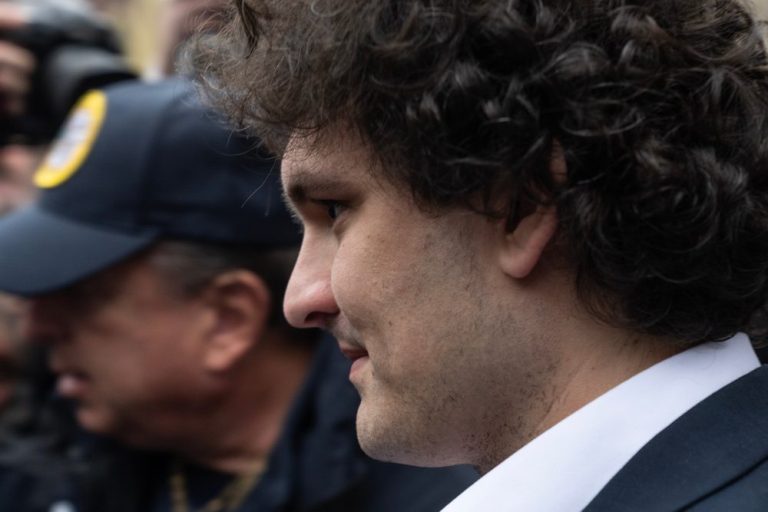
While his colleagues admit their guilt, Sam Bankman-Fried is sticking to his “I’m innocent” script.
This, as the disgraced founder and one-time CEO of the failed cryptocurrency exchange FTX takes to the internet to pen his thoughts from under house arrest at his parents’ $4 million home on Stanford’s California campus.
In a Substack blog post published Thursday (Jan. 12), Bankman-Fried provided the public with his most detailed personal take to-date on FTX’s “pre-mortem overview.”
“I didn’t steal funds, and I certainly didn’t stash billions away,” wrote Bankman-Fried, who is currently facing eight criminal charges levied against him by the U.S. Department of Justice (DOJ). His court date is set for Oct. 3.
“It’s ridiculous that FTX US users haven’t been made whole and gotten their funds back yet,” Bankman-Fried continued, claiming that this new post was about FTX International’s insolvency and not about FTX US, which he said “is fully solvent and always has been.”
“When I passed FTX US off to [John J. Ray III] and the Chapter 11 team, it had around [more than $350 million] net cash on hand beyond customer balances,” Bankman-Fried wrote. “Its funds and customers were segregated from FTX International.”
Ray, the freshly appointed CEO in charge of FTX’s restructuring, told a Delaware bankruptcy judge that he had little confidence in the any of the company’s provided financial statements.
While representing a departure from Bankman-Fried’s other favorite platform, Twitter, the Substack post otherwise repeated, with more detail, several claims the founder made during his pre-arrest media tour.
Many of the assertions posited by Bankman-Fried contradict the allegations of federal prosecutors and bely the guilty pleas of former FTX executives.
Crypto Coda Full of ‘Could Haves’
The extensive post reiterated three main points — and could offer insight into the failed founder’s upcoming legal defense.
Those points are: Bankman-Fried can still make customers whole and should have been allowed to keep running the company; he didn’t run Alameda and hadn’t for years; and the implosion wasn’t his fault because external factors and Binance are primarily to blame.
Notably, Bankman-Fried didn’t use the public post to address the accusations of how FTX customer funds ended up being commingled and traded by Alameda Research or how and why they were allegedly used to buy hundreds of millions of dollars in real estate, and for making tens of millions in political donations to both U.S. political parties.
“I believe that, had FTX International been given a few weeks, it could likely have utilized its illiquid assets and equity to raise enough financing to make customers substantially whole,” he wrote, adding, “There were billions of dollars of funding offers when Mr. Ray took over, and more than [$4 billion] that came in after.”
It remains unclear how raising external capital to make customers whole and fill back in the gaps left by the alleged fraudulent misappropriations of their funds would necessarily work, or how Bankman-Fried’s declarations provide a meaningful strategic departure from the borrow-money-to-plug-holes approach that sunk FTX to begin with.
Still, supporting Bankman-Fried’s claims of the FTX enterprise’s potential solvency, at least in some small way, is the fact that more than $5 billion in cash and liquid assets have been found among FTX’s holdings.
Industry observers have speculated that Bankman-Fried’s latest blog post is an attempt to piggyback on that news.
Read More: How Sam Bankman-Fried Propped up His Hollow Empire With Hype
The founder also used the blog post to take further aim at his one-time law firm, Sullivan & Cromwell (S&C), and rival exchange Binance.
Binance has, in the two months since FTX’s collapse, faced its own challenges in the crypto market.
“In November 2022, an extreme, quick, targeted crash precipitated by the CEO of Binance made Alameda insolvent… Then came [Binance CEO Changpeng Zhao’s] fateful tweet, following an extremely effective months-long PR campaign against FTX — and the crash… And then Alameda’s contagion spread to FTX…,” Bankman-Fried wrote.
As a result of that “attack” from Binance, FTX’s law firm acted rashly and in their own interest by rushing the company into declaring bankruptcy, Bankman-Fried alleged.
“S&C and the GC were the primary parties strong-arming and threatening me into naming the candidate they themselves chose as CEO of FTX — including for a solvent entity in FTX US — who then filed for Chapter 11 and chose S&C as counsel to the debtor entities,” he wrote. “…Since S&C pressured FTX into Chapter 11 filings, however, I worry that those pathways may have been abandoned.”
Bankman-Fried also cherry-picked poorly performing companies from other industries, including Tesla and Facebook, to assign blame to macro market factors.
As for the Alameda Research connection?
“I haven’t run Alameda for the past few years,” Bankman-Fried wrote, emphasizing that “Much of the relevant data … is for a company (Alameda) I wasn’t running at the time.”
Alameda CEO Caroline Ellison is cooperating with federal authorities in their investigation into Bankman-Fried and FTX, has admitted to fraud, and expressed remorse for her actions.
“I have a lot more to say — about why Alameda failed to hedge, what happened with FTX US, what led to the Chapter 11 process, S&C and more,” Bankman-Fried wrote. “But at least this is a start.”
Unlike previous statements where he admitted to oversight mistakes and management failures, language in Thursday’s blog post showed little personal culpability by Bankman-Fried for FTX’s failures.
It remains to be seen whether that approach will bleed into his legal strategy, and above all, whether it will help him avoid jail time.